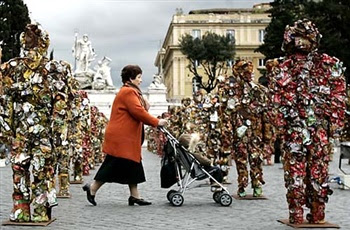
__________________________________________
From NASA:
...Jupiter's hyper-auroras never stop. "We see them every time we look," says Gladstone. You don't see auroras in Alaska every time you look, yet on Jupiter the Northern Lights always seem to be "on."
Gladstone explains the difference: On Earth, the most intense auroras are caused by solar storms. An explosion on the sun hurls a billion-ton cloud of gas in our direction, and a few days later, it hits. Charged particles rain down on the upper atmosphere, causing the air to glow red, green and purple. On Jupiter, however, the sun is not required. "Jupiter is able to generate its own lights," says Gladstone.
The process begins with Jupiter's spin: The giant planet turns on it axis once every 10 hours and drags its planetary magnetic field around with it. As any science hobbyist knows, spinning a magnet is a great way to generate a few volts—it's the basic principle of DC motors. Jupiter's spin produces 10 million volts around its poles.
"Jupiter's polar regions are crackling with electricity," says Gladstone, "and this sets the stage for non-stop auroras."
The polar electric fields grab any charged particles they can find and slam them into the atmosphere. Particles for slamming can come from the sun, but Jupiter has another, more abundant source nearby: the volcanic moon Io, which spews oxygen and sulfur ions (O+ and S+) into Jupiter's spinning magnetic field.
Somehow, these ions make their way to Jupiter's poles where electric fields send them hurtling toward the planet below. Upon entering the atmosphere, "their electrons are first stripped away by molecules they run into, but as they slow down they start grabbing electrons back. The 'charge exchange reaction' produces intense X-ray auroras," he explains...







